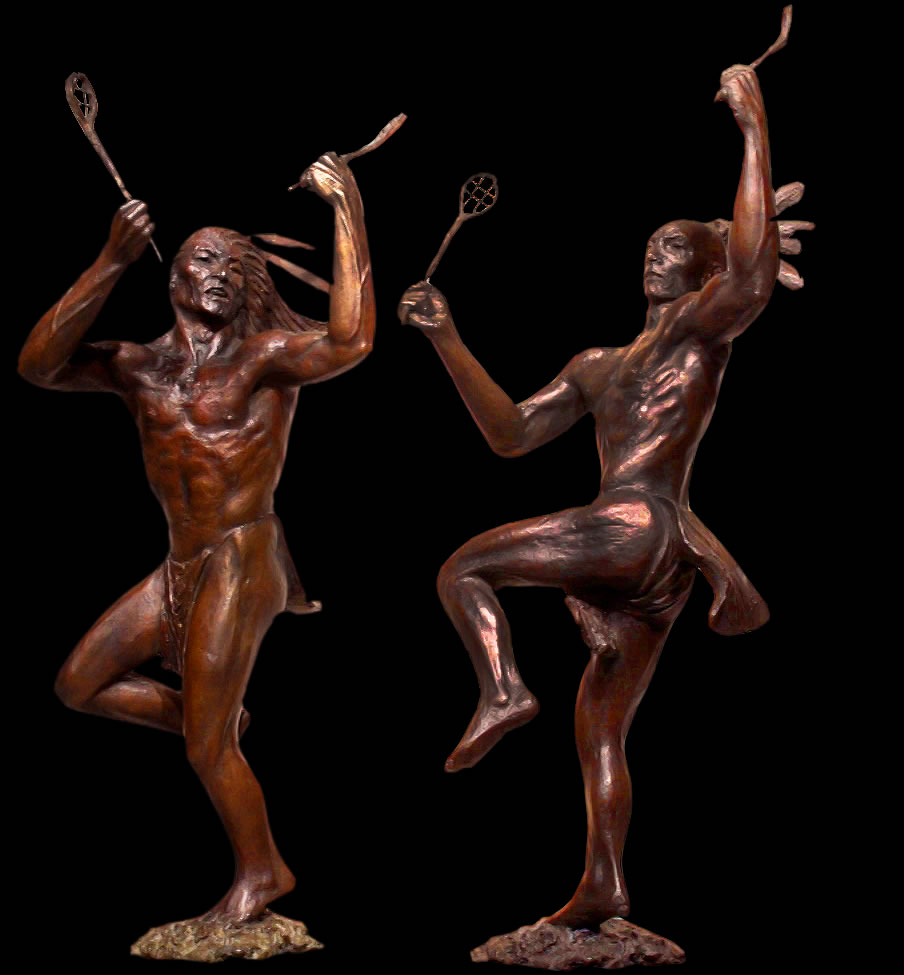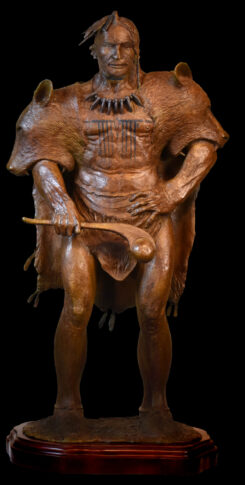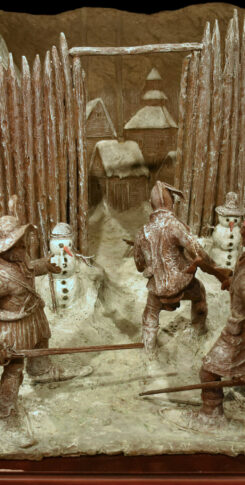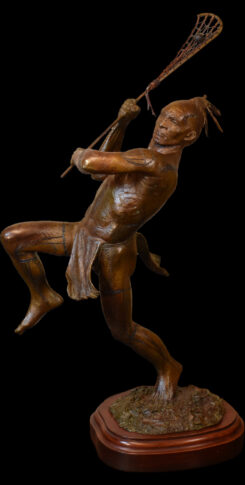

Bronze edition: 60 each | Height: 17″ each
Sold as a set or may be purchased separately
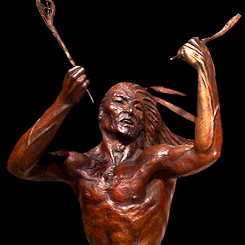
Any number of physical maneuvers that would today be considered fouls were permitted in this, the only double stick form of lacrosse which was played by the Cherokee, Choctaw, Creek and other tribes of the Southeast. Tackling, wrestling, tripping charging, ramming, slashing and striking with the stick, all were allowed. The principle means of “tying up” ones’ opponent is to grab from behind around the waist invariably leading both players to drop their sticks and indulge in a wrestling match. “Sometimes 8 or 10 or more players are engaged in personal conflicts, each individual striving in the most vigorous and adroit manner to gain the mastery. A stranger will shudder to see the violent manner in which they throw each other to the ground … before I witnessed an Indian ball play, I did not know that the vertebral column possessed as great a degree of flexibility as was demonstrated on such occasions. The principal respitory tube is handled in such an uncourteous manner that the jaws open involuntarily followed by a protrusion of the tongue.”
New restrictions about 1848 on the older Cherokee game outlawed choking and breaking heads or limbs “when excited.”
I.P. Evans (c. 1820)
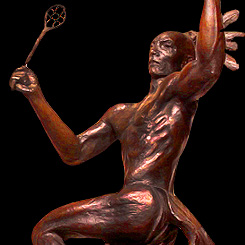
Unlike their Northern counter parts (The Great Lakes and Iroquois versions of the game) the Southeastern form of lacrosse, played by the Cherokee, Choctaw and Creek, involved two sticks. Success or failure was attributable less to the players themselves and more to the prowess of the medicine man who acted much like the coaches of today but with an arsenal of magical powers to control the games’ outcome. The Cherokee conjurers used magic spells and paraphernalia to weaken opponents or to make their team invincible to insure victory. Objects, invisible to opponents, were hidden inside the ball and sticks were “doctored” with special medicine.
“One can readily comprehend the degree of stamina required of successful ball players.”
Folgelson (c. 1962)
A keen eye was kept on the talent displayed on the lacrosse field and warriors were selected from the best players. The energy, dexterity, speed and endurance that enabled one to score against an opponent were the same qualities that prepared one for success in hand to hand combat on the battlefield. “The toll of energy striving to free oneself or keep an opponent from getting free, spent in these exertions with ones’ opponent is tremendous. Add to this the constant tugging and pulling, the fact that the player must periodically sprint long distances at top speed, and one can readily comprehend the degree of stamina required of successful ball players.”
Folgelson (c. 1962)
“This game is so violent that they tear their skins and break their legs very often in striving to raise the ball.”
Baron Lahontan, (c. 1700)
Excerpted from “American Indian Lacrosse,”
Tom Vennum (1994)

